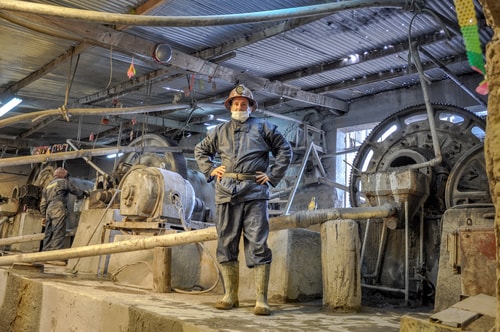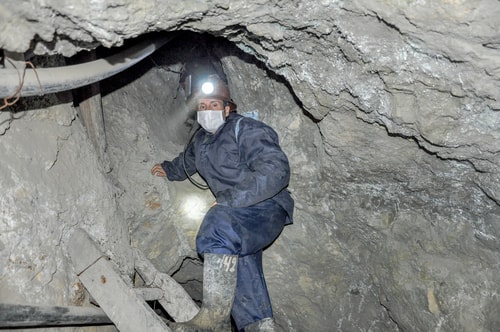GENERAL DESCRIPTION
The Cerro Rico de Potosí mine is one of the largest silver mines in the world. It has estimated reserves of 1.76 billion oz of silver and 540 million tonnes of ore grading 0.17% tin.
FABIO'S REVIEW

I didn't rate this location as a ""must-see"", because it is physically challenging, and certainly not everybody enjoys crawling into dark flooded tunnels and inhaling toxic fumes: however, it is one of the most fascinating experiences I had in South America.
The main challenge of this experience is, put bluntly, breathing. Potosi is one of the highest town in the world (over 4000 meters, i.e. more than 13,000 feet), and the oxygen is already scarce. Then go underground for hundreds of meters in narrow tunnels, and the oxygen level doesn’t get any higher. Add toxic fumes and particles of dust caused by dynamite explosions, and wear a tight mask preventing the little oxygen remaining from entering your lungs - here is your recipe for suffocation!
Initially our group was composed by a dozen persons: half of them died during the trip.
No, just kidding, nobody died, but half of the group didn’t make it: first a couple decided to stay in their hotel due to altitude sickness; then some others got sick in the car and stayed there. Finally, a couple of French girls did enter the mine but felt sick after a few minutes, so they exited immediately. Personally, I almost choked a few times, feeling like Darth Vader asphyxiating himself. Check out the relevant video in my movie ""Another type of underworld""… Every time I watch this video I feel claustrophobic.
I wouldn't do it again, but this is a once-in-a-lifetime experience. I highly recommend it, go for it if you can!
LOCATIONS EXPERIENCED

MINING PLANT
The mines of the Cerro Rico are the richest mines in world history and may have produced 60,000 tons of silver. The name Potosi was adopted by San Luis de Potosi in Mexico to reflect their hopes for equal riches. Some of this wealth was used to build magnificent baroque churches (UNESCO listed sites) and monasteries.
MINING PLANT

The mines of the Cerro Rico are the richest mines in world history and may have produced 60,000 tons of silver. The name Potosi was adopted by San Luis de Potosi in Mexico to reflect their hopes for equal riches. Some of this wealth was used to build magnificent baroque churches (UNESCO listed sites) and monasteries.
MAP
VIDEOS
Check out my YouTube page for all videos!
RESOURCES
This section is currently under construction.


